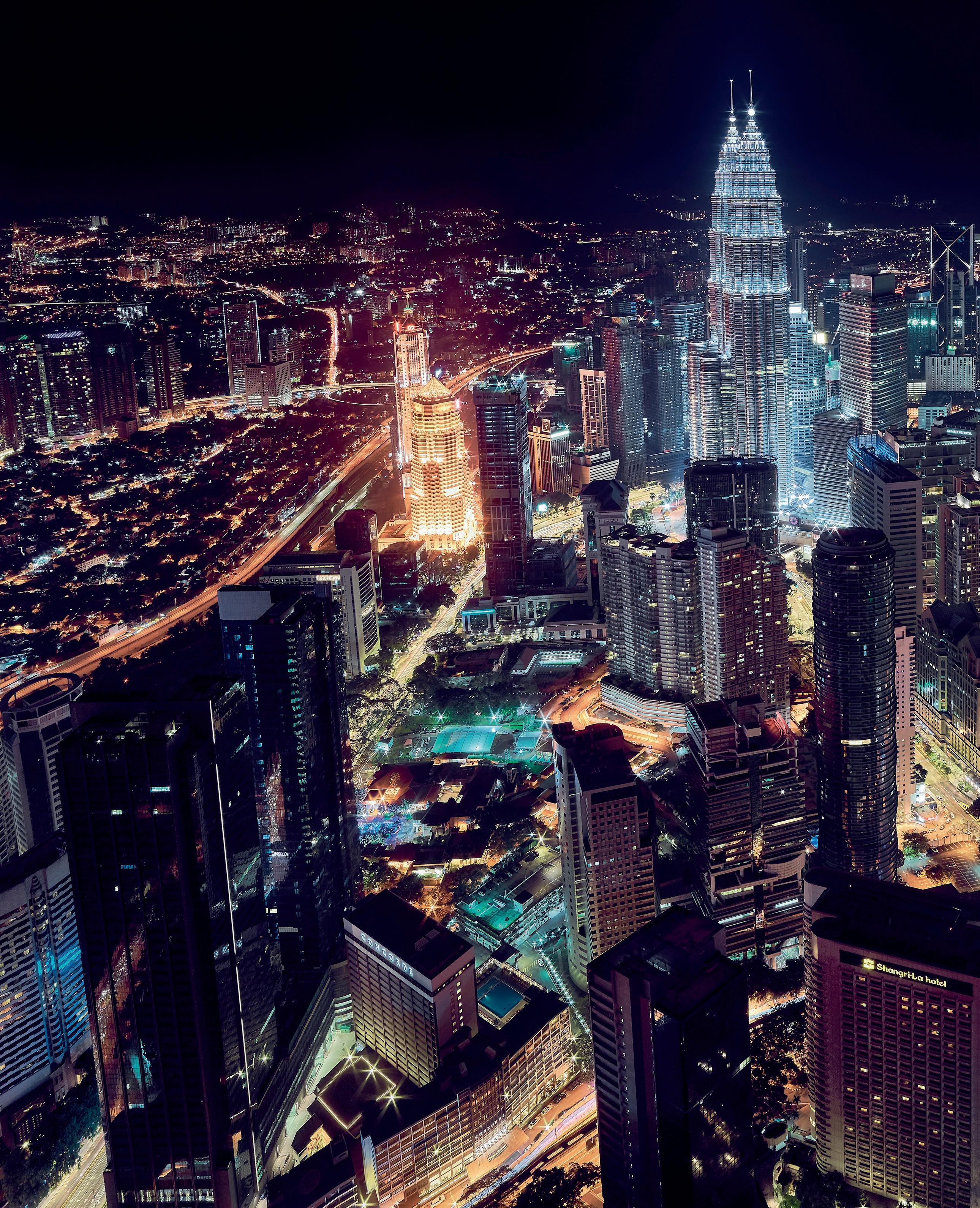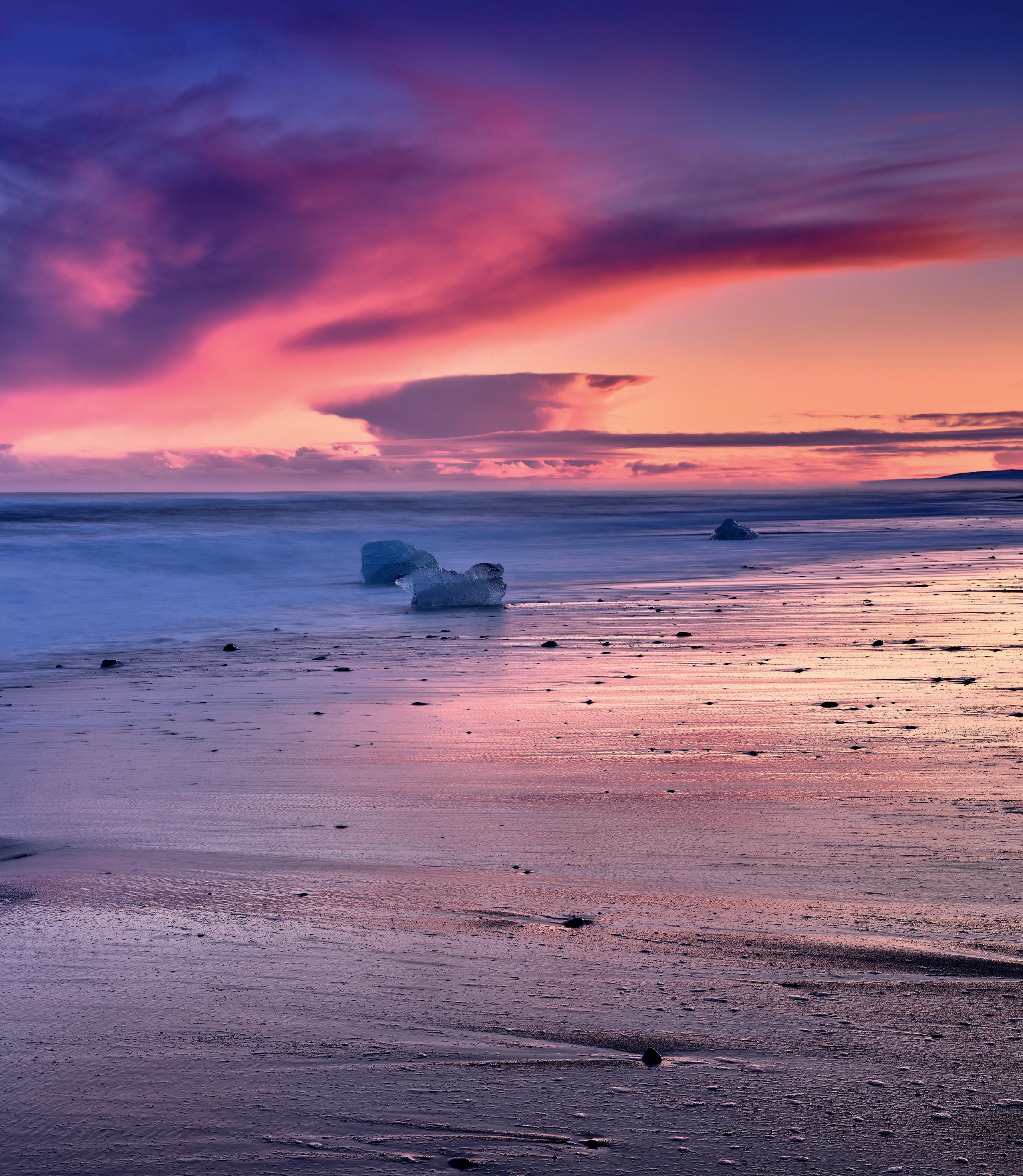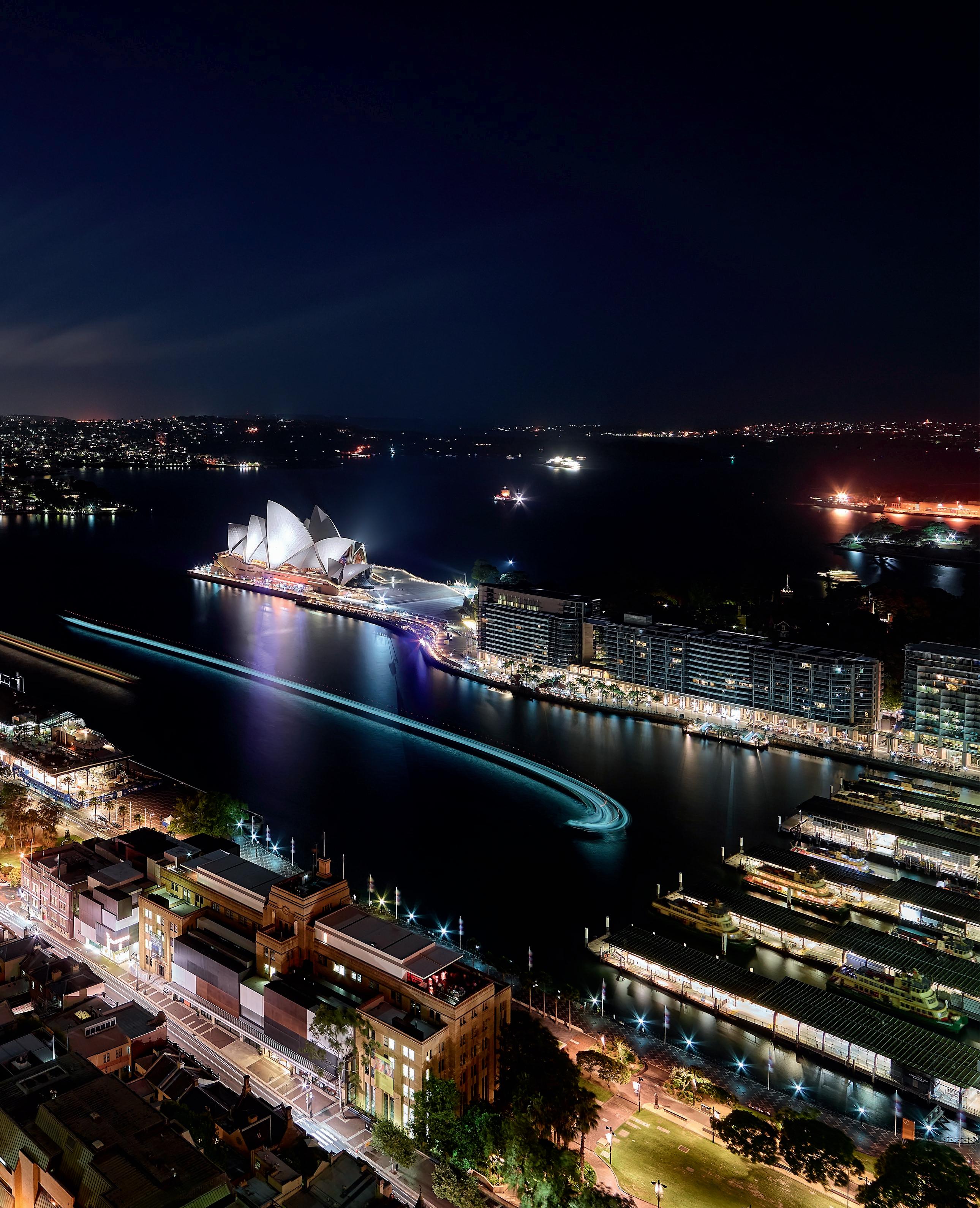
10 minute read
Paul Reiffer
photography behind, too. But what of Paul’s image of Las Vegas by night? It certainly takes us into the realm of ‘more than you could imagine’. Indeed, Paul explains how he sees his job: ‘It’s a straightforward one,’ he says. ‘Through a single image I have to express to someone what it felt like to be there at that time, whatever it was that drew me to that place has to be in there. Then there has to be the secondary point of interest beyond the shapes and forms, the thing that people find when they want to see more.’ It’s also often to do with offering a perspective that is out of day-to-day experience. Paul explains: ‘I’m often quoted as saying “get up high or get down low” and that’s very true – photography should be taking us beyond normal perceptions.’

However, right now – today – Paul Reiffer is a bit of a caged animal… it’s been a growing feeling, a travel photographer stuck in a pandemic – a strange world. In 2019, Paul was travelling the majority of the time – that was his normal, and by the letter of the law he shouldn’t have counted as tax resident in the UK, despite ‘living’ in Dorset. He comments: ‘I remember parking at Heathrow on one insane mission. In the boot were three identical suitcases with different labels – I flew in and out for each job and literally swapped the cases from the car. I don’t advocate that way of life at all, but it won’t happen again for a long time because the logistics just will not work. I now know for sure that my home office is way too small… and I don’t want to go back to
the level of activity I had a couple of years ago, but obviously somewhere in-between would be a good thing.’
Paul is particularly known for his relationship with Phase One and for good reason – he’s adept at bringing to life the technical advances in medium-format digital technology and has done so from the start point of a working photographer needing to achieve more: ‘I was out in Shanghai struggling with dynamic range on 35mm and I knew that what I needed was simply beyond the scope of my equipment.’ The story as it goes, however, is anything but technical perfection. He continues: ‘I’m one of life’s stupid people with purchasing decisions. Every car I have ever bought has been brand new online without even sitting in it. With my move to Phase One

Spot check > Phase One IQ280 | 28mm | 30 sec | f/22 | iso 35
Spot check > Phase One IQ280 | 28mm | 40 sec | f/14 | iso 35

I was getting requests for big prints, as in measured in metres, and had a feeling at the time that I had enough requirement for the investment and mage © Paul Reiffer planned on buying a Hasselblad I system. But one day the Google algorithm decided to tell me that Phase One had just hit 80mp. I looked at it but found it very hard to get pricing – that so annoyed me, though it was the same with every manufacturer. With an attack of the Chinese mindset “you must be able to do this” I flew to Hong Kong, picked up the Phase One and then flew straight to a job in San Francisco, intending to use it out of the box, as you do.’
Of course, Paul immediately realised it wasn’t that simple: ‘I found out on day one that I needed to go back to basics and re-learn how to take a picture with this thing – how it behaves with shadows and how you could pull around raw data and, er, I had to learn Capture One. I was actually looking at this object thinking “oh shit”. Naively I kind of thought buying better kit = better photographs. Short term it was one step forwards and three steps back. But long term it was the game changer I required.’
Paul accepts that if he hadn’t switched to medium format he wouldn’t have the clients he now has or be doing the kinds of work he has done. But all the same, he now knows there’s a reason why Phase One uses dealers as they can provide set-up sessions and kick-start your journey with the equipment. He says: ‘Oh yes, I should have done that.’ g

Paul compares his decision to go with Phase One to that of buying a Mac instead of a PC: ‘I felt that Phase One was aiming its system at me, at the landscape and cityscape photographer – never under-estimate the power of a brochure – looking at the 60mp Hasselblad material at the time it didn’t have my kind of work in there. I found comfort in one path but was being dragged along by the other route.’
But back to the process of MF adoption… Heading back home following that first job in California with his new gear to hand and an email turns up: ‘An airline wanted to wrap an image of San Francisco around their head office. Without that system I wouldn’t have been able to reply saying it could be done.’ But despite this moment, Paul feels it’s a mistake to make a camera a differentiator: ‘It’s a selling point, part of your product… but it’s not you. Would you go to a certain craftsman to carve a table because they have the sharpest chisel? You invest in the person, not the tool they happen to use. The gear becomes a feature of me and a benefit of coming to me, but it’s me who is creating the picture.’
Even when the MF learning curve has been conquered, Paul concedes that it’s by no means all plain sailing: ‘You have to get good at it – the photography. With MF your mistakes are going to be bigger… it’s not forgiving. In many ways, you have to go back to basics and re-master focus and depth of field to a level I never even knew I needed. A 35mm camera tends to guess that you actually meant something else altogether, but here there’s not the assistance – as a result people see these systems as scary. And everyone knows that MF slows everything down. The simple fact of Spot check > Phase One IQ4 150mp | Schneider Kreuznach LS 40-80mm | 0.5 sec exposure, frame-averaged long exposure, total 7 seconds | f/16 | iso 35


file size could make editing painful without computing power to match your inputs. And if there’s something to fix, there’s just more of it to work on.’
And in the past few years the technical advances on the Phase One platform have moved far beyond making more and more megapixels work along with the ever-more intelligent Capture One editing software. A truly groundbreaking advance in digital photography is Frame Averaging, which (very much in short) allows the photographer to separate out shutter speed and the time of an exposure. So, for example, a two-minute Frame-Averaged Long Exposure will be compiled from 40x 3-second exposures. Once the camera hits the end of that sequence, it averages all those values for each pixel and produces one raw file with the

combination of what it saw across the entire series. In return for churning through maybe a terabyte of data, you get the benefits of flexible ‘exposure’ time, vastly reduced noise, improved dynamic range and the ability to create shots that would have previously required an array of filters with all the issues that surround their use. Paul says: ‘By using frame averaging you can select a shutter speed of 1/30 sec for that single exposure, but capture the scene for nearly a minute. It’s really exciting to be working in new ways that go beyond what could be achieved in camera before. I’m hoping that I’ll be back out on the road soon doing my job. For everyone in the commercial world the “new normal” is largely an unknown, but let’s hope my work has a continued place in it.’ www.paulreiffer.com

Iam delighted to be writing this new column as Overseas Director for the Institute and also as a Director of the Federation of European Photographers (FEP). Now it has come to my attention that many of you haven’t heard of the FEP or what this means to you and your membership. So, in this issue, I talk to Jim Lowe FBIPP who is also the FEP Chair of Qualifications, who outlines for us the benefits of membership:
“The benefits of belonging to a professional organisation far outweigh any disadvantages. The FEP, based in Brussels, was created to raise the standard of professional photography throughout Europe and to promote and support photographers. Its members know the FEP as ‘a warm, friendly association for all individuals committed to the craft and art of photography’.
Its raison d’être is to provide a range of benefits to assist professional and aspiring photographers to achieve their objectives, through educational activity such as seminars and workshops – providing the opportunity to gain distinctions based upon a member’s level of proficiency. These activities are open to all European photographers who are members of a national association affiliated to the FEP.
One of the big advantages for most European photographers is the knowledge gained through the expansion of ideas, techniques and seminars for all photographers and students. Meeting and networking with other photographers who may be at different stages in the learning process can be intimidating but invaluable. Some organisations open their competitions to FEP-qualified photographers at members’ rates.
With FEP qualifications, a professional photographer can operate in European countries. However, as with any photographic qualifications those applying for the FEP’s EP (European Photographer), QEP (Qualified European Photographer) and MQEP (Master Qualified European Photographer) qualifications show a commitment to advancing yourself and the field of photography in general.
Being able to advertise as an internationally accredited or certified professional European photographer will also help you command a higher fee in your home country. It may even help you realise you deserve it, as not many of your competitors would have the same European qualification.
When you go to the trouble and expense of gaining certified or accredited status by joining your national Professional Photographers’ Association, like the BIPP, you are showing yourself and others that you are committed to upholding the highest of standards, constantly seeking to improve your craft. It also shows that you value the profession of photography and wish to be recognised as an exponent of high-quality photography worldwide.
Networking
Other photographers are not likely to become our clients, so why do we need to network? Because we all have different specialties – building relationships within the professional photography family will always pay off in the long run. If you do not have local FEP friends, who are you going to call when you drop your precious 70-200 f2.8 lens or your portable lighting unit blows up during an important assignment in Europe? If you are lucky enough to have an assignment in Europe, through networking you may be able to borrow gear from an FEP photographer. It could save a lot of hassle carting photographic gear through customs at airports and ferry crossings, especially now that ‘Brexit’ has happened. I have completed two architectural shoots in Berlin and each time I borrowed equipment from my European friends, which certainly made it easier and more cost-effective when flying.
The photography community within the FEP is extremely friendly, warm, supportive and welcoming – much more so than you might have expected, especially in such a competitive field as professional photography. Through networking, the FEP offers the opportunity to have photographs critiqued by experts in the same discipline as you and is one of the quickest and most effective ways to improve your work. You will begin to look at your own photographs differently and see them more critically.
If at all possible, the FEP tries to organise at least one of their two judging sessions each year to coincide with the host country’s photographic association’s annual congress. In Europe these are usually four-day events, with judging of national awards, workshops










